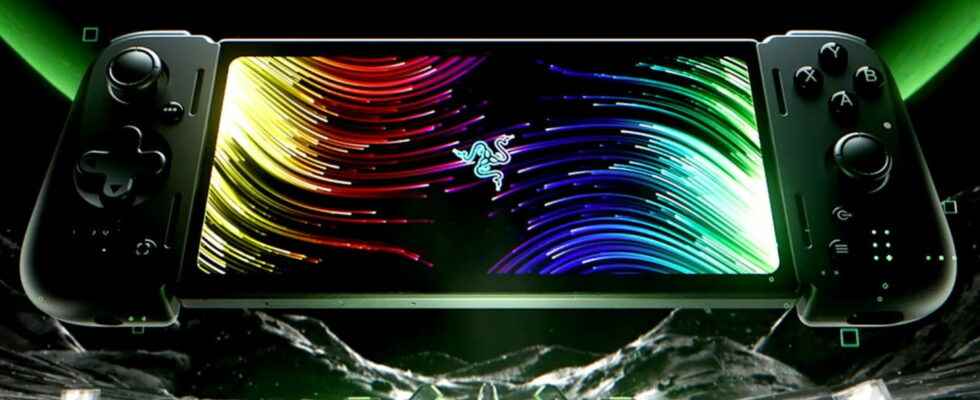After Valve and Logitech, Razer is entering the portable game console market with the Edge, a hybrid Android tablet with attractive technical characteristics, which even allows you to take advantage of cloud gaming via 5G.
Long neglected by manufacturers, the portable game console is making a strong comeback since Nintendo gave it a new lease of life with the essential Switch. And the development of cloud gaming seems to inspire manufacturers. So, after Valve and its famous Steam Deck and Logitech with its amazing G Cloud, it’s the turn of Razer to enter this very promising market with the Edge. And this great specialist in gaming accessories – which manufactures keyboards, mice, joysticks, screens, headsets, microphones, but also computers – has chosen a different and interesting path by designing a hybrid tablet running Android, equipped with standard joysticks and equipped with a 5G module allowing it to connect almost anywhere, unlike its competitors which only have Wi-Fi…
Razer Edge: attractive technical characteristics
The Razer Edge is based on a 26 x 8.5 x 1.1 cm tablet associated with a Razer Kishi V2 Pro mobile controller separated into two joypads – the Kishi is a Razer accessory for smartphones intended to transform the latter into a small console – , which gives it a total weight of 400 g. Of course, the newcomer’s controllers are more advanced than its phone counterparts, with eight buttons, two triggers and two micro-switch buttons. The handheld console features a 3.5mm audio port and Razer HyperSense haptic feedback technology for better sound. And, above all, it has a 6.8-inch AMOLED type touch screen that can display a Full HD + definition (2400 x 1080 pixels), with a refresh rate of 144 Hz. Technically, it is therefore much better than what offer Nintendo, Valve (below Full HD with 1,280 x 800 pixels and 60 Hz) and Logitech (Full HD with 1,920 x 1,080 pixels and 60 Hz).
From a technical point of view, the Razer Edge has it under the hood. It features a Snapdragon G3x Gen 1 chip – in partnership with Qualcomm – specially developed for cloud gaming on Android. It is supposed to display content in 4K and up to 144 frames per second. Added to this is an ultra-powerful Qualcomm Snapdragon G3x Gen 1 SoC featuring eight Kyro cores at 3 GHz and an Adreno GPU. 8GB of RAM, 128GB of storage – expandable up to 2TB with a MicroSD card – and a 5,000mAh battery. Little surprise: the Edge has a 5 megapixel webcam that can shoot in 1080p (Full HD) at 60 fps (frames per second), which is practical for filming yourself in full stream on Twitch or making videos with your friends. In short, on paper, the Razer tablet literally crushes the Logitech console.
Razer Edge: local and cloud gaming with 5G
The Razer Edger runs on Android and therefore allows the console to host games and applications from the Play Store. It also automatically embeds the Epic Games launcher – a store and a library of games. But the manufacturer is also betting on cloud gaming with Nvidia GeForce Now and Xbox Cloud Gaming – available with the Xbox Game Pass Ultimate subscription. Of course, the player can also install applications offering remote access to PC toy libraries such as Steam Link, Moonlight and Parsec.
The Razer Edge is available in two flavors. A first, which only offers Wi-Fi, is at 399 dollars – a price similar to the Logitech G Cloud and lower than for the Steam Deck – and will be available on the Razer store. A second version allows you to take advantage of the holy 5G, but is unfortunately currently reserved for the United States via a partnership with the operator Verizon. Its price has not yet been revealed, and the console should arrive by January 2023. It remains to be seen whether it will be able to face the competition – including smartphones, which are increasingly powerful and allow you to play locally or in the cloud via Razer’s Kishi. It would be a shame!

